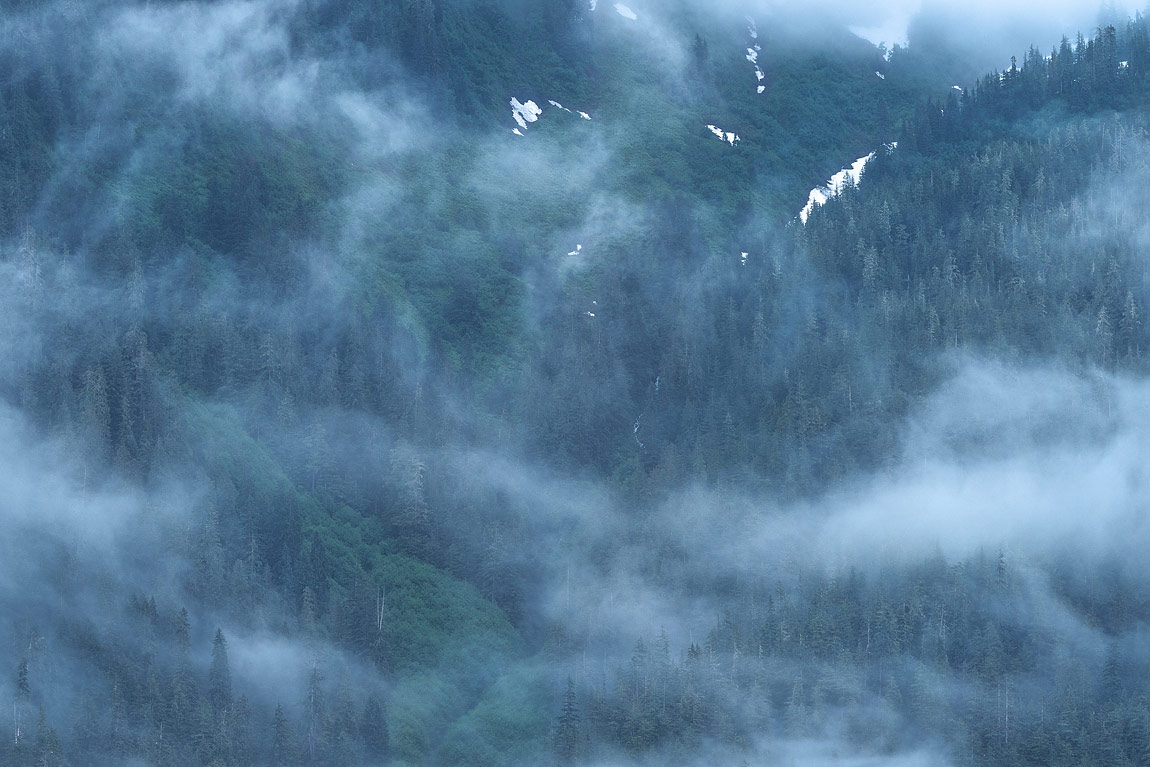There were loads of photographic opportunities while cruising long distances over days in search of humpback whales feeding in the waterways of southeast Alaska. Forests of Sitka Spruce, Western Hemlock, Alaska Cedar, and Western Red Cedar blanketed the ribboned fog landscape of LeConte Bay – shadows and light cascading in all directions. This image is one of several landscape images taken from the boat on this trip.
LeConte Bay is an 810-foot-deep, six-mile-long bay in the southeastern region of Alaska, located east of Frederick Sound. The bay was named in 1887 after Joseph LeConte, then professor of geology at the University of California. LeConte Bay is a steep-sided fjord that is home to a seal rookery. LeConte Glacier, the southernmost tidewater glacier in the Northern Hemisphere, showcases itself at the final point of the bay.
Harbor seals come to LeConte Bay to congregate and pup atop the icebergs that have calved off LeConte Glacier. While boating through the bay, dozens of mother-pup pairs can be seen dotting the icebergs between late May and the middle of June. Then, near the end of July, mothers and pups separate while other seals enter the bay. This is because the glacier ice in LeConte Bay deters the harbor seal's main predator, the killer whale, from entering the bay.
The best months for tourists to tour the bay, which takes about four or five hours, are May through August.


